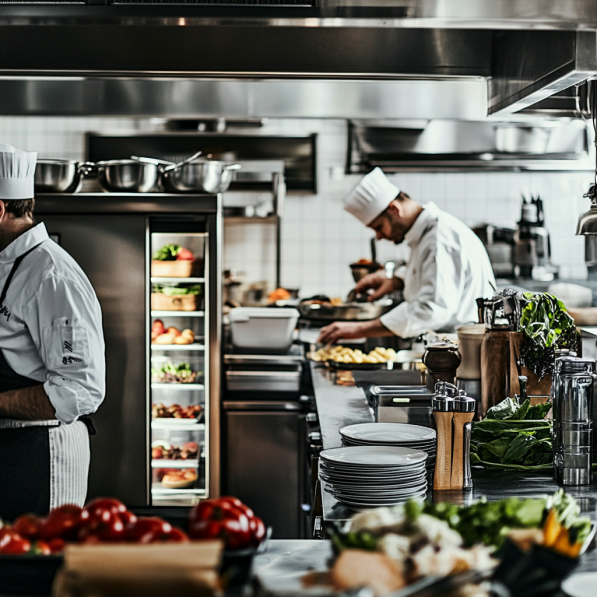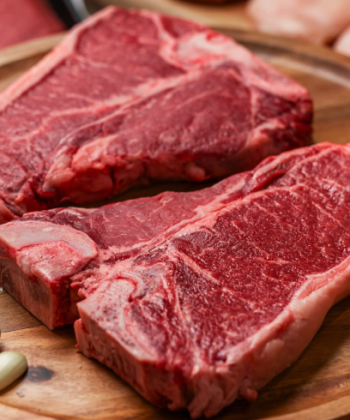
Having a properly functioning refrigerator is a must in the fast-paced world of restaurants. It may be the unsung hero in the kitchen, but it keeps ingredients safe, flavors intact, and guarantees health compliance. But when the unexpected happens—a sudden breakdown, a mysterious leak, or inconsistent cooling—it can make all the difference between a minor glitch and a full-blown crisis. Having a plan for refrigerator repair is essential.
Here’s a guide for restaurant owners to confidently handle refrigerator emergencies, keep operations running smoothly, and avoid losing valuable time, ingredients, or customer trust.
1. First Things First: Identifying the Problem
When your refrigerator starts acting up, pinpoint the problem: Is it not cooling properly? Are there unusual noises? Has a mysterious puddle of water appeared beneath it? Identifying the issue early will help determine if it’s something you can handle in-house or if it’s time to call in professional help.
Example: If the refrigerator isn’t cooling, check if the temperature settings were somehow changed or if the doors aren’t sealing properly. Sometimes even small user errors can present symptoms of more serious problems.
Troubleshooting Tip: Keep a thermometer on hand to check the internal temperature. For a commercial refrigerator, it should fall between 35°F and 40°F. Anything less or more may be a sign of a problem.
2. Simple Solutions You Can Try Before Calling a Technician
Not all refrigerator issues require immediate professional attention. Some can be easily fixed with basic adjustments or maintenance tasks, saving both time and money.
Quick Fix Ideas:
- Check Power Supply: Ensure the refrigerator is plugged in and the outlet is working. A tripped circuit breaker might be the culprit.
- Clean the Coils: Dust and dirt on the condenser coils can slow cooling. Keep them clean for maximum efficiency.
- Check the Door Seals: Damaged or worn-out gaskets can cause cold air to escape. Look for gaps and replace the seals if needed.
Example: If you’re noticing pooling water, the drain line is probably clogged. This is usually remedied by either a gentle rinse to clear it out or using a thin wire.
Refrigerator Emergency Tip: While quick fixes can help, don’t ignore persistent issues. Delaying professional repairs may lead to further damage.
3. Food Safety Management When the Refrigerator Breaks Down
Food safety is a top priority for any restaurant. Once the refrigerator fails, the clock starts ticking. Perishable food items—dairy, meats, and seafood—can spoil quickly, leading to economic loss and health risks. Knowing how to handle these situations can save both your inventory and your reputation.
What’s Next:
- Transfer to Backup Units: Move perishables to a backup refrigerator or freezer as soon as possible.
- Use Ice Packs or Coolers: Ice packs and coolers can help keep items at safe temperatures as a temporary solution.
- Monitor Temperatures Closely: Follow FDA guidelines to determine what can be saved and what must be discarded.
Food Safety Tips: Never compromise on safety. Discard any food stored above 40°F for more than two hours to avoid health risks.
4. When to Call a Professional
While some problems can be resolved in-house, others require the expertise of a professional refrigerator repair technician. Knowing when to call for help will prevent a minor issue from turning into a major one.
Signs You Need a Pro:
- Continuous temperature fluctuations even after troubleshooting.
- Odd or unusually loud sounds coming from the unit.
- Electrical issues, like flickering lights or tripped breakers.
- Frequent leaks or persistent puddles that cleaning doesn’t resolve.
Example: If the compressor breaks, it’s not a DIY fix. Call a professional immediately to address the issue before it spreads to other components.
Pro Help Tip: Build a relationship with a reliable appliance repair company that specializes in commercial refrigerators. Having their number on speed dial can save precious time during an emergency.
5. Preventing Future Refrigerator Disasters
The best way to prevent a refrigerator emergency is through regular maintenance. Proactive care extends the life of your equipment, keeps it running efficiently, and reduces the likelihood of unexpected failures.
Maintenance Checklist for Restaurants:
- Clean Coils Regularly: Dust and grease accumulate quickly in busy kitchens.
- Check Door Gaskets: Ensure seals are tight to retain cold air.
- Monitor Temperatures: Record refrigerator temperatures daily to catch fluctuations early.
- Schedule Professional Maintenance: Regular inspections can spot potential problems, such as refrigerant leaks or worn motors, before they escalate into complete failures.
6. The Bigger Picture: Why Refrigerators Are Critical to Restaurant Success
A refrigerator isn’t just another piece of equipment; it’s the backbone of your kitchen. Its performance affects food quality, safety, and overall customer satisfaction. By prioritizing maintenance and having a clear plan for handling emergencies, restaurant owners can protect their business from unnecessary disruptions.
Example with a Smile: Treat your refrigerator like the MVP of your kitchen team. Just like you wouldn’t leave a star player untrained or uncared for, your refrigerator needs regular attention to stay at the top of its game.
Refrigerator Emergency Insight: Preventive care and a trusted repair service aren’t just prudent investments—they’re vital to the smooth running of a restaurant.
Final Thoughts: Stay Cool, Stay Prepared
A broken refrigerator can feel like a disaster, but with the right approach, it doesn’t have to derail your restaurant. Focus on food safety first. By understanding basic troubleshooting steps and knowing when to call in professionals, you can turn potential crises into manageable challenges.
Remember, regular maintenance is your best defense against unexpected breakdowns. By taking proactive steps to care for your equipment, you’re safeguarding your investment and ensuring a seamless dining experience for your customers.


